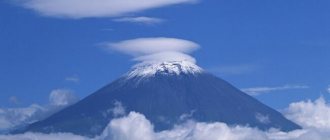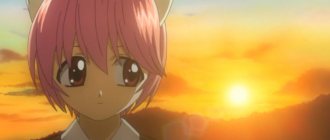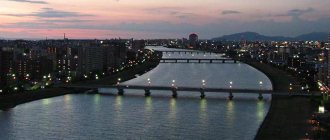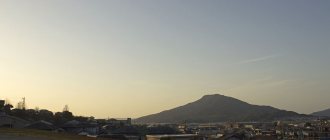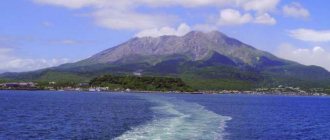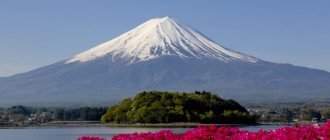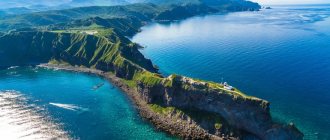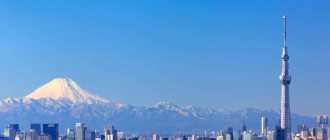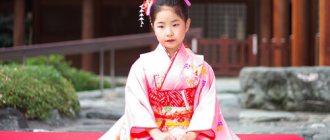We'll tell you what beautiful natural attractions you should definitely see during your trip to Japan. Be sure to read before traveling.
Japan is the land of the rising sun, the birthplace of a unique culture and age-old traditions. Since ancient times, traditional Japanese art has been closely intertwined with the theme of nature and the seasons and even imitates them. Japanese literature, paintings, music and even sweets!
We have made a selection of places that truly inspire the Japanese. Read it after you take your trip to Japan.
Hitachi Park
Hitachi Park, located in the north of Tokyo, is the best choice for any tourist. This place is wonderful in any season. All year round, many seasonal flowers bloom in it, spreading like a bright blanket over a huge field. The most favorable time is April and May. But if you come in September, then don’t despair! It is in this month that forget-me-nots bloom and Hitachi Park reflects the clear blue sky like a mirror.
Natural wonders of Japan
Japan is one of those countries that amazes the European tourist with its unusualness and difference from everything he has seen before. In addition to its architecture, futuristic cities and distinctive culture, Japan boasts a magnificent natural environment that has inspired artists for centuries.
Onsen
A national treasure, hot springs are scattered throughout the country. Even monkeys love to swim in them. The Japanese truly embraced this natural wonder and turned it into an integral part of their culture. People can bathe in hot springs both outside and inside the spas.
Mount Asahi
Rising to an altitude of 2290.9 meters, Asahi is the highest mountain on the island of Hokkaido. It is a popular tourist destination all year round. Climbing the mountain is quite easy and does not require any special skills or equipment.
Shiraito Falls
Shiraito Falls is considered one of the most beautiful waterfalls in Japan, and is located next to Mount Fuji and the Fuji Five Lakes.
Kerama Islands
A group of 22 islands located relatively close to Okinawa provides an amazing piece of paradise. Only four of the islands are inhabited, leaving plenty of space for adventure and untouched nature. The islands boast stunning beaches and a diverse marine life that attracts divers. In winter, humpback whales can be observed here.
Esino
Recognized as a UNESCO World Heritage Site, the mountain has been a place of pilgrimage for centuries. The mountains are covered with dense forest, which is covered with colorful foliage in spring and autumn.
Five Fuji Lakes
A group of lakes is located at the foot of Mount Fuji. The lakes were formed after a powerful volcanic eruption. In spring, the area is covered in shibazakura - pink moss - and attracts visitors.
Nati Waterfall
With a height of 133 meters, Nachi is the tallest waterfall in Japan. Seiganto-ji is a Buddhist temple built near a waterfall, adding additional charm and mystery to the place.
Aso Mountains
One of the largest volcanoes in the world is located on the island of Kyushu. Located in Kyushu Aso National Park, the volcano is easily accessible as there is car parking near the crater.
Mount Yari
Located in the northern Alps of China, Mount Yari is one of the most famous and beautiful in Japan. It is popular among tourists who take up the challenge to climb to its peak. The landscapes are breathtaking.
Mount Fuji
The highest mountain in Japan, Fuji, also has great historical and cultural significance for the Japanese. Being also a volcano, Fuji has a perfect pyramid shape and is a place of pilgrimage.
Also see “Unique sites of Turkey under the auspices of UNESCO World Heritage” and “Little-known wonders of the world.”
attractions, nature, UNESCO, Japan
Kinkaku-ji Temple
Kinkaku-ji Temple (Golden Pavilion) is located in the Kyoto area. The building is beautiful in itself, but the distinguishing feature is that it is covered with a layer of gold foil. Construction was completed in 1397 for the ruler of Japan, Ashikaga Yoshimitsu. Throughout its existence, the building was set on fire twice during the civil war in the 15th century and once in 1950. It is still in excellent shape to this day.
Shirakami Sanchi Ridge
The range is located in Aomori and Akita prefectures and covers an area of more than 1,300 km. Shirakami is home to rare natural resources and is under the vigilant protection of the state . Flora and fauna are extremely diverse. There are trees here with a 2000-year history, thanks to the height - alpine plants and, of course, the most picturesque river in Japan - Akaishi.
Mount Fuji (Honshu Island)
When you mention Japan, Mount Fuji is immediately perceived. When you mention Fuji, Japan is immediately perceived. This mountain is as much a symbol of the country as their flag with the rising sun. The place is a mecca for tourists from all over the world. The volcano mountain has an almost symmetrical shape and looks gorgeous from almost any angle. Mount Fuji has been sung in poems, songs and has been shown in many films. Rock climbing enthusiasts can visit it between July and August.
Chubu
Region in Japan Chubu
Castle in the region Region in Japan Chubu
Tuba in all its glory
Spanning the central region of Honshu, Chubu is home to the largest chain of mountains in the country, the Japanese Alps, as well as Mount Fuji, one of Japan's most iconic images and symbols.
Consequently, there are many excellent hiking trails in this region. Chubu is undoubtedly the winter sports capital of the country, as both the cities of Nagano and Yuzawa have numerous ski resorts for you to visit. Visiting hot springs is also a favorite pastime for visitors and locals in the region. The villages of Oku-Hida Onsen and Yamanouchi are popular places to visit, with the latter being home to the famous bathing snow monkeys.
The charming town of Shirakawa-go boasts many traditional farmhouses and centuries-old buildings for you to discover, while the surrounding area also features the magnificent Three Amo Falls and the majestic Mount Haku.
Himeji Castle
This castle is rightfully considered the most beautiful castle in all of Japan. Therefore, it bears the second graceful name “White Heron Castle” . It survived many battles and, by a lucky chance, was not destroyed. In the 14th century, a large fort was built around the castle. The construction of the castle itself was completed in 1609. Himeji Castle is a vivid representation of Japanese style and the luxurious interiors of that time.
Yakushima Island
It is located near the southern coast of Kyushu. The island has gained incredible popularity both among the Japanese themselves and among tourists due to its location and nature. Beautiful glades and the oldest cedar forest of Yakusugi , where some trees are 1000 years old and there is even reason to believe that the oldest tree is about 7000 years old. Yakushima Island is a wonderful place for walking and meditation. There are many campsites on the territory, so you can always find an overnight stay there, and at night admire the stars combined with the sound of the ancient cedar forest.
